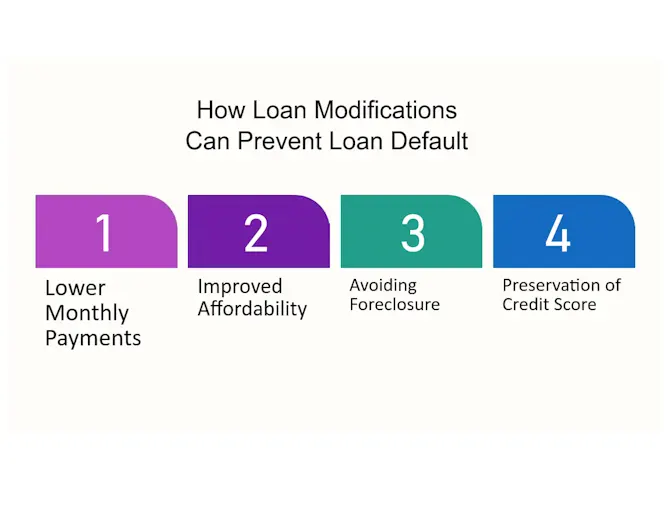January 5th, 2026
Managing multiple loans effectively requires a strategic approach to avoid default and maintain financial stability.
Start by assessing your financial position to understand your income, expenses, and debt obligations. Prioritize paying off high-interest loans first, as this will reduce the overall interest burden.
The “avalanche” method, which focuses on clearing high-interest debts while making minimum payments on others, can be particularly effective.
Consolidating loans can also simplify repayments and potentially lower interest rates. It’s crucial to keep your total monthly loan payments below 40% of your disposable income to avoid financial strain.
Also, setting up automatic payments ensures timely repayments, helping to maintain a good credit score and avoid penalties.
Lastly, building an emergency fund can provide a financial cushion in case of unexpected expenses, reducing the risk of default.
By following these strategies, you can manage multiple loans more efficiently and maintain financial health.
Top Strategies for Managing Multiple Loans and Avoiding Default
Managing multiple loans effectively is crucial to maintaining financial stability and avoiding default.
Effectively managing multiple loans requires a strategic approach to avoid default and maintain financial stability.
One of the most crucial strategies is to create a detailed budget.
This budget should account for all sources of income and expenses, including each loan payment.
By having a clear picture of your financial situation, you can prioritize your spending and allocate funds specifically for loan repayments.
Tracking your expenditures closely and identifying areas where you can cut back can free up additional funds to address debt.
Using budgeting tools or apps can simplify this process, ensuring you stay on top of your financial obligations.
Here are some top strategies to help you stay on track with your payments and manage your debt responsibly:
1. Create a Detailed Budget
Strategy:
- Develop a comprehensive budget that includes all your income, expenses, and loan payments. Categorize your spending to identify areas where you can cut back and reallocate funds towards debt repayment.
Implementation:
- Track Your Income: Record all sources of income.
- List Expenses: Include essential expenses like rent, utilities, groceries, and loan payments.
- Allocate Funds: Prioritize debt payments in your budget. Use budgeting tools or apps to keep track and make adjustments as needed.
Example: If your monthly income is $4,000 and your total expenses, including loan payments, amount to $3,200, ensure you allocate the remaining $800 towards savings or additional debt payments.
2. Prioritize Loans Based on Interest Rates
Strategy:
- Focus on paying off loans with the highest interest rates first. This approach, known as the avalanche method, helps reduce the total interest paid over time and accelerates debt reduction.
Implementation:
- List All Loans: Order them by interest rate from highest to lowest.
- Make Extra Payments: Allocate extra funds towards the highest-interest loan while making minimum payments on others.
Example: If you have credit card debt at 18% APR and a student loan at 5% APR, direct any extra payments towards the credit card debt first.
3. Consolidate or Refinance Loans
Strategy:
- Consider consolidating or refinancing loans to simplify payments and potentially secure lower interest rates. Consolidation combines multiple debts into a single loan, while refinancing involves replacing an existing loan with a new one at a lower rate.
Implementation:
- Research Options: Look for consolidation or refinancing offers that fit your financial situation.
- Evaluate Benefits: Compare interest rates, fees, and terms to ensure you’re getting a better deal.
Example: If you have multiple high-interest credit cards, a debt consolidation loan with a lower interest rate can simplify your payments and reduce overall interest costs.
4. Set Up Automatic Payments
Strategy:
- Automate your loan payments to ensure they are made on time. Setting up automatic payments can help you avoid late fees and reduce the risk of missing a payment.
Implementation:
- Enroll in Auto-Pay: Contact your lenders to set up automatic payments from your bank account.
- Monitor Accounts: Regularly review your bank statements and loan accounts to ensure payments are processed correctly.
Example: Set up automatic payments for your mortgage, car loan, and student loans to ensure each payment is made on time without manual intervention.
5. Build an Emergency Fund
Strategy:
- Create an emergency fund to cover unexpected expenses and provide a financial cushion. This helps prevent missing loan payments in case of sudden financial challenges.
Implementation:
- Start Small: Aim to save at least $500 to $1,000 initially.
- Gradually Increase: Build your emergency fund to cover 3-6 months’ worth of expenses over time.
Example: Save $100 per month into an emergency fund to build a financial buffer that can cover loan payments during emergencies, such as job loss or unexpected expenses.
6. Communicate with Lenders
Strategy:
- Maintain open communication with your lenders if you’re struggling to make payments. Many lenders offer hardship programs or temporary relief options.
Implementation:
- Contact Lenders Early: Reach out as soon as you anticipate difficulties in making payments.
- Inquire About Options: Ask about forbearance, deferment, or modified payment plans.
Example: If you face temporary financial difficulties, contact your mortgage lender to discuss options like a payment deferral or modification.
7. Monitor Your Credit Report Regularly
Strategy:
- Regularly check your credit report for accuracy and to stay informed about your credit standing. Monitoring helps identify issues early and allows you to address them before they impact your loan payments.
Implementation:
- Obtain Reports: Get free credit reports from AnnualCreditReport.com.
- Review and Dispute: Check for inaccuracies and dispute any errors with the credit bureaus.
Example: Reviewing your credit report quarterly can help you catch errors that could affect your credit score and loan terms.
8. Consider Professional Advice
Strategy:
- Seek advice from a financial advisor or credit counselor if you need help managing multiple loans or creating a debt repayment plan.
Implementation:
- Find a Counselor: Look for certified credit counselors or financial advisors with experience in debt management.
- Create a Plan: Work with them to develop a personalized plan to manage and reduce your debt.
Example: A credit counselor can help you develop a debt management plan that consolidates payments and negotiates with creditors for better terms.
An important strategy is to prioritize your loans based on their interest rates, a method known as the avalanche technique.
Focus on paying off the loans with the highest interest rates first while making minimum payments on others.
This approach minimizes the total amount of interest you’ll pay over time and accelerates your debt reduction efforts.
Additionally, consolidating or refinancing loans can also be beneficial.
By combining multiple debts into a single loan with a lower interest rate, or refinancing an existing loan to secure better terms, you can simplify payments and reduce overall interest costs.
This strategy not only streamlines your debt management but can also provide relief if you’re struggling with high-interest loans.
By implementing these strategies, you can effectively manage multiple loans, stay on top of payments, and work towards financial stability while minimizing the risk of default.

Insider industry experts regarding on Top Strategies for Managing Multiple Loans
Maintaining open communication with your lenders and setting up automatic payments are practical steps to prevent default.
If you encounter financial difficulties, promptly reach out to your lenders to discuss possible relief options such as forbearance or modified payment plans.
Automatic payments ensure you never miss a due date, reducing the risk of late fees and damage to your credit score.
Also, building an emergency fund can provide a financial cushion, helping you cover unexpected expenses and continue making loan payments even during challenging times.
Regularly monitoring your credit report and seeking professional advice from financial counselors can further support your efforts in managing debt effectively and avoiding default.
Insider industry experts offer several valuable secrets for effectively managing multiple loans and avoiding default. These strategies go beyond conventional advice and provide deeper insights into maintaining financial stability and managing debt efficiently:
1. Leverage the Snowball Method for Psychological Boost
Secret: While the avalanche method is often recommended for its financial benefits, the snowball method can be more effective for motivation. The snowball method involves focusing on paying off the smallest loan balances first, regardless of interest rates. This approach provides quick wins and a psychological boost, which can help maintain momentum and commitment to debt repayment.
Implementation: Begin by listing your loans from smallest to largest balance. Allocate any extra funds to the smallest loan while making minimum payments on the others. Once the smallest loan is paid off, move on to the next smallest balance. This strategy helps build confidence and keeps you motivated as you see your debts decrease.
Example: If you have credit card debt of $500, a personal loan of $2,000, and a student loan of $10,000, focus on paying off the $500 credit card debt first. The sense of accomplishment from eliminating the smallest debt can drive you to tackle the larger loans with renewed energy.
2. Utilize Balance Transfers and Introductory Offers
Secret: Many credit card companies offer promotional balance transfer rates or introductory offers that can significantly reduce the cost of debt. By transferring high-interest credit card balances to a new card with a 0% APR promotional period, you can temporarily avoid interest and focus on paying down the principal.
Implementation: Research credit cards offering 0% APR on balance transfers and compare fees and terms. Ensure you can pay off the transferred balance before the promotional period ends to maximize savings. Be cautious of balance transfer fees, which can offset the interest savings if not carefully considered.
Example: If you transfer $5,000 of high-interest credit card debt to a card with a 0% APR for 12 months and a 3% transfer fee, you save significantly on interest if you pay off the balance within the promotional period.
3. Negotiate with Creditors for Better Terms
Secret: Many creditors are willing to negotiate terms, especially if you’re experiencing financial hardship. Industry insiders suggest proactively reaching out to creditors to discuss options such as lower interest rates, extended payment terms, or temporary forbearance.
Implementation: Prepare to discuss your financial situation and offer a plan for how you will manage payments going forward. Creditors may be more flexible than you expect, particularly if you demonstrate a commitment to repaying your debt.
Example: If you’re struggling with a car loan, contact your lender and request a temporary reduction in your interest rate or an extension of your loan term. Many lenders are open to adjustments, particularly if you’ve been a responsible borrower in the past.
4. Automate and Synchronize Payments
Secret: Automating payments for all loans can prevent missed payments and reduce the risk of default. Additionally, synchronizing payment due dates can simplify your financial management by consolidating due dates into a single period each month.
Implementation: Set up automatic payments for each loan to ensure timely payments. If possible, align the payment due dates across different loans. This may involve requesting changes to due dates with your lenders or adjusting your payment schedule to fit within your budget.
Example: If you have loans with different due dates scattered throughout the month, request to align them to a common date or set automatic payments for each loan to coincide with your paycheck schedule.

5. Monitor Your Debt-to-Income Ratio
Secret: Keeping a close eye on your debt-to-income (DTI) ratio can help you gauge your overall financial health and make adjustments before debt becomes unmanageable.
Industry experts recommend regularly calculating your DTI ratio and taking proactive steps if it becomes too high.
Implementation: Calculate your DTI ratio by dividing your total monthly debt payments by your gross monthly income. Aim to keep this ratio below 36% to avoid financial strain.
If your ratio is high, consider increasing income, reducing expenses, or paying off debt more aggressively.
Example: If your total monthly debt payments are $1,200 and your gross monthly income is $4,000, your DTI ratio is 30%.
If this ratio increases due to additional debt or reduced income, take action to reduce debt or increase income to maintain financial stability.
By implementing these insider strategies, you can effectively manage multiple loans, avoid default, and work towards financial stability with greater confidence.
These techniques offer both practical solutions and psychological strategies to enhance your debt management efforts.
--- article sharing ---
